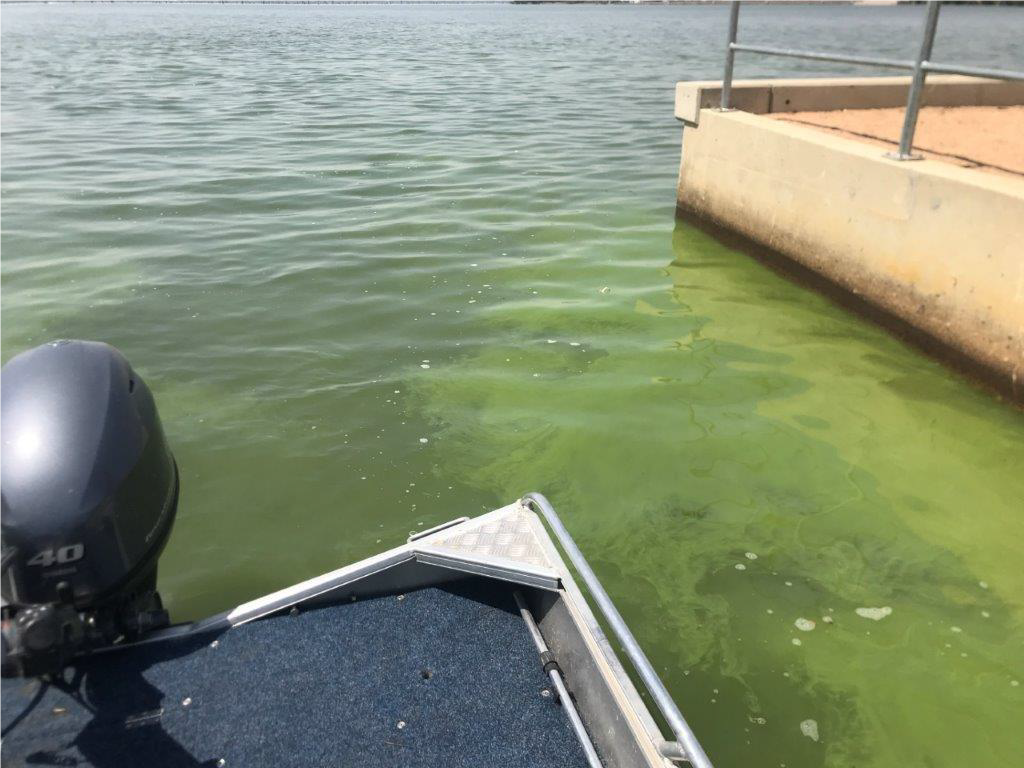Blue-green algae (cyanobacteria) are a type of microscopic, algae-like bacteria which inhabit most aquatic systems including streams, lakes, estuaries and the sea. There are many different species (toxic and non-toxic) and hot sunny days, increased nutrient levels and still weather conditions can provide optimal conditions for them to flourish – rapid growth can create a ‘bloom’ on the water’s surface. Blooms mostly occur in warmer weather (spring, summer and early autumn), but they can happen any time if conditions are favourable.
Blue-green algae can affect water quality, however we have treatment processes in place to ensure the continuous provision of safe and reliable water. Sometimes higher levels of blue-green algae can create an ‘earthy’ taste or odour in treated water, but the water remains safe to drink – we’ll always let you know if that changes.
All drinking water supplied to customers meets the Safe Drinking Water Act 2003 and the Australian Drinking Water Guidelines. We continually monitor and assess the water quality, and samples are regularly sent to an independent laboratory for testing. We also work closely with Goulburn-Murray Water, which manages a number of waterways from which we source water.

Blue-green algae in the Yarrawonga Weir in 2020.
Current blue-green algae detections
EUROA
Goulburn Valley Water is aware of a taste issue Euroa's drinking water supply, which is associated with a detected an algal bloom in a high-level catchment in the Euroa supply system at Waterhouse Reservoir. The bloom was detected on October 15 and sampling at all water storages and at the treatment plant was immediately carried out.
To address the taste, we have changed our process to source water from an alternate water storage in the short term, and we’ve optimised the treatment process at the Euroa Water Treatment Plant to remove as much of the taste and odour as possible. The treatment optimisation includes treating the water using powdered activated carbon, which is very effective at removing taste and odour compounds. Operators are continuing to optimise the different carbon varieties and rates to remove taste and odour compounds.
Our water quality testing at the plant is currently showing no indications of algae in the raw water inflows since switching to the alternate water storage. The new water source and treatment has already created significant improvement in the treated water supplied by the plant, and we expect the taste and odour to continue to improve over the next couple of days.
We know these occasional taste and odour issues are undesirable and we’re really sorry for any disruption or inconvenience. Our water quality specialists continue to monitor and respond to any changes in the water supply.
Sometimes, these algal blooms can cause an ‘earthy’ taste or odour in the water. Algal blooms can last for weeks or months, depending on weather conditions. Some people may notice changes in taste and odour more or less depending on sensitivity to water changes, or due to timing of fresh treated water coming through the plant and into various parts of the distribution network.
LONGWOOD
We have also detected a blue-green algae bloom in the raw water supply for Longwood in the Nine Mile system, which is creating an earthy taste and odour in Longwood's drinking water supply. We are working to optimise the water treatment plant operations, including replacing the activated carbon filtration media which should help to remove more of the taste and odour compounds caused by the algae.
We'll continue assessing the water quality and continue working to improve the water taste and odour. We know these occasional taste and odour issues caused by seasonal impacts are undesirable and we're really sorry.
Regulated (non-potable) supplies
Goulburn Valley Water supplies several towns with non-potable (non-drinking) water supplies. We recommend these customers have an alternate supply of drinking water.
Potable (fully treated) supplies
We regularly monitor for blue-green algae in our raw water supplies. Our water treatment plants remove algae and dissolved compounds as part of the treatment process before the water reaches your taps.
FAQs - blue-green algae and water treatment
The majority of our raw water is sourced from the Goulburn and Murray Rivers, their associated tributaries, and irrigation channel systems managed by Goulburn-Murray Water. In recent years, water storages on both the Goulburn and Murray River systems have experienced blooms of blue-green algae that have impacted on the water quality.